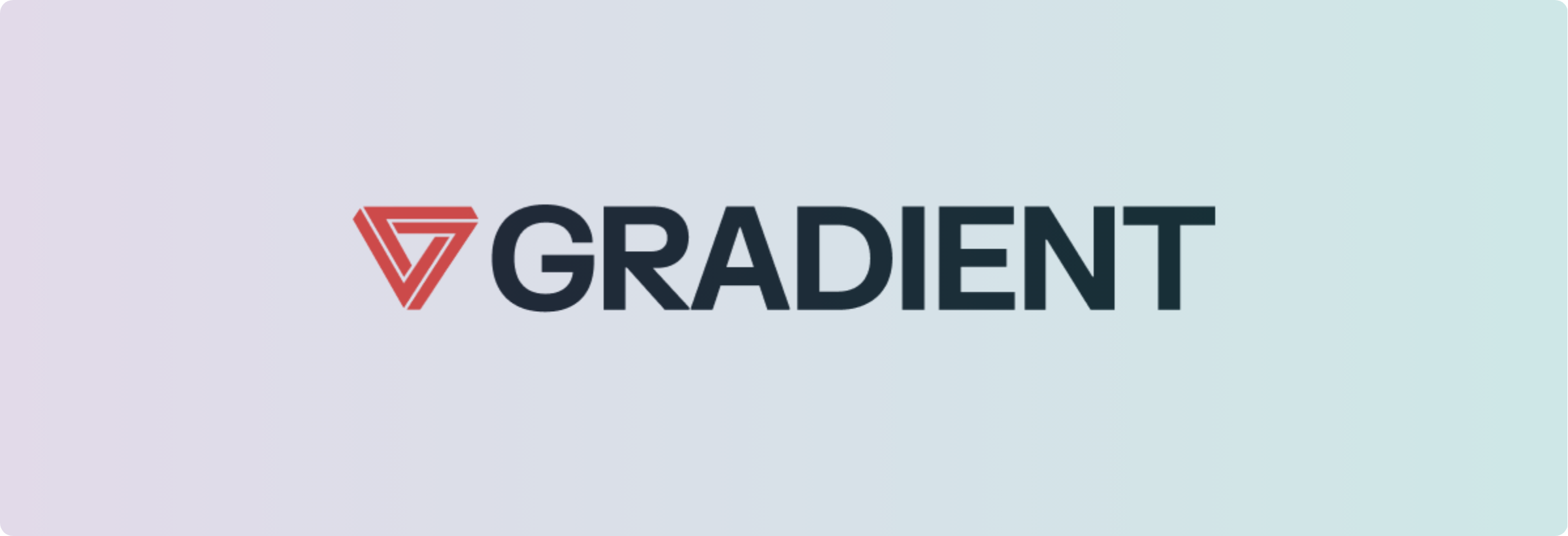Anatomy of a Deal: How AV Evaluated and Invested in Oura
An AV Masterclass

For those looking to understand venture investing, a case study can be the best place to start. At AV, we learn by looking back at both our stellar and less successful deals. In the case of our investment in Oura, the story is one of strong conviction, strategic timing, and a company that continues to exceed expectations.
Oura is best known for its smart ring, a sleek wearable that tracks key health metrics — including heart rate, blood oxygen levels, skin temperature, and daily activity — delivering personalized insights through its companion app. It has attracted a diverse user base, from Jennifer Aniston to the England national football team, and has sold over 2.5 million rings. As one of AV’s top-performing companies in terms of multiple on invested capital (MOIC),* Oura continues to scale, expanding retail partnerships with Amazon, Costco, and Target while collaborating with major brands like the NBA, Equinox, and Best Buy.
This blog retraces the steps we took in adding Oura to our portfolio, unfolding both typical venture investment processes, as well as Alumni Ventures’ own unique perspective and approach. Those steps included
- HomeDiscovering the sector and identifying Oura as a high-potential company
- HomeConnecting with Oura through our expansive network of 850,000+ supporters, including alumni from top universities, industry experts, and successful entrepreneurs
- HomeEvaluating the opportunity — analyzing the company, deal terms, market conditions, and timing
- HomeSecuring an investment allocation in a competitive round.
We’ll also use this case study to reflect on what we got right, what we could have done better, and the broader lessons this investment offers to founders and investors alike.
Curiosity, Connections, Conviction — And Perfect Timing

The Oura deal wasn’t accomplished overnight. Instead, it was the result of curiosity, persistent shoe-leather investigating, key relationships — and that elusive alchemy of good timing and good luck.
In early 2019, David Shapiro, Founding Partner of Alumni Ventures’ Blue Ivy Ventures (serving Yale University alumni and friends), was reading Why We Sleep: The New Science of Sleep and Dreams by renowned sleep expert Matthew Walker. The book reshaped his perspective on sleep as a foundational pillar of health. Inspired, he shared it with AV CEO Mike Collins, who offered a simple yet powerful suggestion: “You should reach out to the author. Sleep is an underinvested space.”
Taking the advice to heart, Shapiro connected with Walker through an AV Investment Committee member at Google/Verily. Their discussions reinforced his belief that sleep technology was ripe for investment — not just in software but in wearables.
That realization led him to Oura. Eager to experience the technology firsthand, Shapiro bought an Oura Ring and was so impressed that he began pursuing the company as a potential investment. Key connections paved the way:
- HomeHe discovered that Oura’s Chairman, an early angel investor, was a Yale alumnus.
- HomeHe found a link to the company’s CEO through a former colleague in Helsinki, who knew one of Oura’s co-founders.
- HomeHe leveraged Blue Ivy Ventures portfolio company Rhone to act as a CEO reference.
In discussions with Oura’s team, Shapiro and others emphasized how AV’s extensive alumni networks could amplify the company’s brand and reach. Convinced, Oura’s CEO made room for Alumni Ventures in its 2019 Series B round — a pivotal period just before the company’s breakout growth.
At the time, Oura was already gaining traction as a leading sleep tracker, but the COVID-19 pandemic elevated it into a must-have health device. In March 2020, Oura partnered with UC San Francisco to study whether its technology could detect early physiological signs of COVID-19 in 2,000 frontline healthcare workers. A few months later, as the NBA prepared to restart its season, the league purchased 2,000 Oura rings to help monitor players, coaches, and staff for potential symptoms.
This surge in visibility and adoption cemented Oura’s reputation as more than just a sleep tracker — it was evolving into a comprehensive health monitoring tool. AV’s investment was perfectly timed to capitalize on this wave of rapid growth.
Why We Invested: Market Potential, Product Strength, and Strategic Backing
With the sleep tech market booming and Oura demonstrating strong traction, we saw a rare opportunity. Here’s what stood out:
1. Explosive Market Tailwinds
Oura’s core value proposition was simple yet powerful: better sleep leads to better health. Consumer demand for sleep-enhancing technology was surging, fueled by growing awareness of sleep’s impact on cognitive function, athletic performance, and chronic disease prevention.
The numbers underscored this rising momentum:
- Home150 million Americans don’t get enough sleep.
- Home60 million suffer from sleep apnea, with 60% remaining undiagnosed.
- HomeThe global sleep market was projected to hit $80 billion by 2020.
SOURCE: Oura Due Diligence Report, Alumni Ventures, 2019.
2. Sticky Product & Engaged User Base
The data made it clear that Oura was more than just a product:

- Home77% of users continued wearing the ring beyond 90 days.
- Home75% of active users checked the app within an hour of waking.
SOURCE: Oura Due Diligence Report, Alumni Ventures, 2019
These engagement metrics suggested that Oura had tapped into a fundamental behavioral need, making it an integral part of users’ daily routines.
3. Scalability & Capital Efficiency
Unlike many hardware startups that burned through cash on marketing and advertising, Oura fueled its growth organically. The company had a powerful word-of-mouth referral engine, and its customer acquisition costs (CAC) were steadily declining while sales kept climbing. This level of capital efficiency in the wearables space was rare — and compelling.
4. Strong Investor Syndicate
Great companies attract great investors, and Oura’s impressive lineup of backers brought not just capital but strategic value:
- Home
Forerunner Ventures
Backers of Warby Parker, Glossier

- Home
Gradient Ventures
Google’s AI-focused venture arm

- Home
Square
Expertise in payments and ecosystem development

- Home
Marc Benioff
Salesforce founder and health-tech visionary
With such a strong investor syndicate, we felt even more confident in Oura’s ability to scale and evolve.
The identity of a co-investor is not necessarily indicative of investment outcomes.
Risks and Uncertainties We Also Weighed
Even the most promising startup comes with certain challenges, and Oura was no exception. Here were some concerns we flagged in our pre-investment.
1. First-Time CEO
At the time, Oura’s CEO, Harpreet Rai, had a finance background but was new to leading a high-growth startup. While he had proven himself as a strong fundraiser and operator, the challenge of scaling a global wearables brand was uncharted territory for him.
2. Reliance on a Single Revenue Stream
Oura was primarily a hardware business, with revenue dependent on one-time ring sales. The company planned to introduce subscription-based services and premium content, but this transition was still theoretical.
3. A Growing Competitive Landscape
The sleep and wearable space was becoming increasingly crowded:
- HomeApple was improving sleep tracking on the Apple Watch
- HomeGoogle bought Fitbit in a $2.1 billion deal
- HomeWhoop was aggressively scaling with a subscription-first model.
The question we had to consider: Could Oura maintain its leading edge and compete against these tech giants?
The Evolution of Our Thinking
Growth That Exceeded Expectations
Oura’s trajectory far outpaced our initial projections, with revenue surpassing $40 million by late 2019. At the same time, its customer base exploded from 3,000 to 150,000 in just three years — a remarkable feat that underscored its product-market fit and viral adoption.
Expanding Beyond Sleep: A Stronger Market Position
Oura successfully evolved from a sleep tracker to a broader health monitoring tool. The pandemic accelerated demand for remote health tracking, and Oura’s ability to measure body temperature and heart rate became an invaluable feature for early illness detection. This shift positioned Oura as a key player in the fast-growing digital health space.
Monetization & Subscription Success
One of our early concerns was Oura’s reliance on hardware sales. The company tackled this head-on by launching Oura Membership, a subscription service offering deeper insights and personalized health recommendations. This move:
- HomeCreated a more predictable, recurring revenue stream
- HomeBoosted customer lifetime value (LTV)
- HomeBetter positioned Oura against Whoop’s subscription-based model.
Oura’s ability to scale, adapt, and monetize beyond hardware validated our confidence in its long-term potential.
Lessons From the Journey: Where Our Thesis and Diligence Held Strong
1. Betting on Sleep as a Mega-Trend
We forecasted early that sleep would become a frontier in digital health — and we were right. Oura’s commitment to scientific validation, precision biometrics, and user-friendly insights positioned it as a category leader in the burgeoning sleeptech industry.
2. Believing in the Product’s Stickiness
We anticipated that Oura’s product would drive long-term engagement. High customer retention remains one of the company’s biggest competitive advantages, reinforcing its value as an indispensable part of users’ daily health routines.
3. Seeing Market Expansion Opportunities
A key driver of Oura’s success has been its ability to evolve beyond sleep tracking and expand into broader health monitoring. The company has added features to:
- HomeTrack stress levels and recovery
- HomeDetect early signs of illness when resilience is low
- HomeSupport women’s health, including cycle tracking and fertility insights.
Beyond features, Oura has also strengthened its strategic positioning by forming a partnership with one of the largest continuous glucose monitoring (CGM) companies and acquiring a Finnish healthtech in the same space. These moves have broadened Oura’s market reach and long-term potential, solidifying its place at the intersection of wearables, biometrics, and digital health.
Broader Takeaways for Investors
1. Strong Investor Syndicates Signal Strength
The best companies attract the best investors. Oura’s impressive roster of backers reinforced our confidence in the company’s potential and provided strategic advantages beyond capital.
2. Hardware Is Hard
Oura’s growth has been exceptional, but on the whole, hardware startups face steeper challenges than software-first businesses. Supply chain logistics, manufacturing complexities, and distribution hurdles add layers of difficulty that can slow even the most promising companies.
3. Subscriptions Drive Stability
One critical lesson for investors: hardware alone (without a consumable element) isn’t enough. Oura’s transition to a subscription model added a critical layer of recurring revenue, customer retention, and financial predictability, making the business more defensible and scalable over the long term.
The Oura Case Study: Closing Thoughts

Oura has been a standout investment for Alumni Ventures — one that reinforced our thesis on sleep tech as a high-growth category and underscored the importance of adaptability in a competitive landscape.
For investors, the key takeaway is clear: the best companies evolve. Oura’s strategic expansion into subscriptions, AI-driven insights, and broader health monitoring exemplifies what we look for in long-term winners.
The company’s success speaks for itself. Oura recently announced it had secured $200 million in its Series D funding round led by Dexcom, a giant ($28 billion market cap) in continuous glucose monitoring. The raise pushed Oura’s valuation to $5.2 billion — a nearly 40x increase from our initial investment.* We remain invested in Oura’s journey and excited about what’s ahead.
* Valuation increase according to the Multiple on Invested Capital (MOIC) metric. MOIC is equivalent to the multiple of return gross of fees and equals (Current Valuation + Amounts Returned) / Total Investable Capital. Reported performance would be lower if the impact of fees were reflected.
Want to learn how we evaluate deals? Check out our Masterclass Series on venture investing!
This communication is from Alumni Ventures, a for-profit venture capital company that is not affiliated with or endorsed by any school. It is not personalized advice, and AV only provides advice to its client funds. This communication is neither an offer to sell, nor a solicitation of an offer to purchase, any security. Such offers are made only pursuant to the formal offering documents for the fund(s) concerned, and describe significant risks and other material information that should be carefully considered before investing. For additional information, please see here. Example portfolio companies are provided for illustrative purposes only and are not necessarily indicative of any AV fund or the outcomes experienced by any investor. Example portfolio companies shown are not available to future investors, except potentially in the case of follow-on investments. Venture capital investing involves substantial risk, including risk of loss of all capital invested. This communication includes forward-looking statements, generally consisting of any statement pertaining to any issue other than historical fact, including without limitation predictions, financial projections, the anticipated results of the execution of any plan or strategy, the expectation or belief of the speaker, or other events or circumstances to exist in the future. Forward-looking statements are not representations of actual fact, depend on certain assumptions that may not be realized, and are not guaranteed to occur. Any forward-looking statements included in this communication speak only as of the date of the communication. AV and its affiliates disclaim any obligation to update, amend, or alter such forward-looking statements, whether due to subsequent events, new information, or otherwise.
